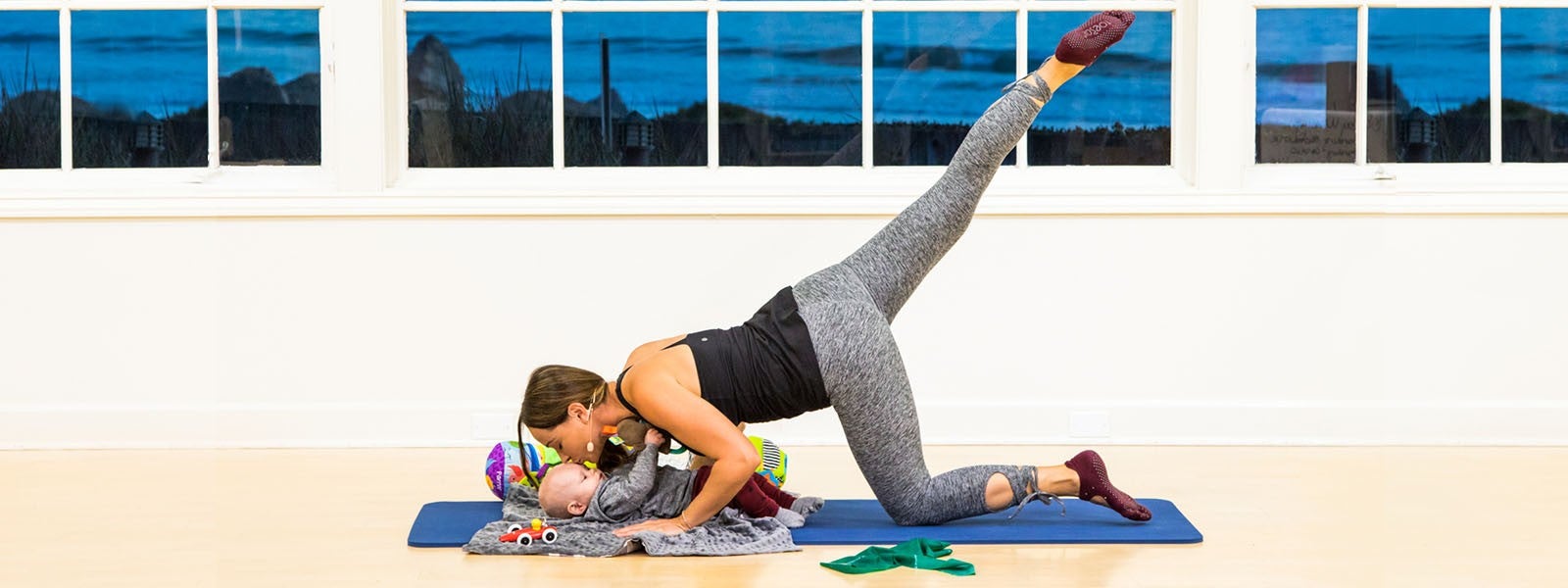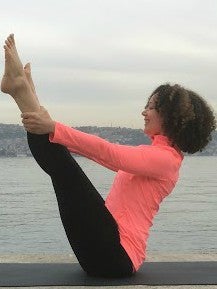
Five Pilates Exercises for the Fourth Trimester
Ask any new mom carrying a new baby, car seat, and diaper bag, and she’ll likely confirm that being a mom requires strength, both emotional and physical. After all, that cute little growing baby starts to weigh as much as a good-sized kettlebell in no time.
Every pregnancy and postpartum experience is unique, so it makes sense that every new mom’s recovery from the marathon of pregnancy and birth will be unique, too. The-six week postpartum checkup, at which new moms are usually given the go-ahead to resume daily activities--including Pilates--is just a starting point.
Rushing back too quickly and intensely can lead to prolonged recovery or even injury. Does that mean new moms should avoid all exercise for the first six weeks? Not at all.
Movement is healing. During the initial six weeks postpartum, you probably won’t be doing traditional Pilates. With insight from Brigette Arlé, Doula, CLC, perinatal movement specialist and owner of Rooted Boston in Boston, Massachusetts and Melissa Wong , MSc PT, pelvic health physiotherapist and owner of Markham Pelvic Health in Markham, Ontario, Canada, as well as my own experience as a Pilates instructor and mom to a one-and-a-half-year-old, I’ve compiled a series of safe and appropriate exercises to get you back to your regularly scheduled Pilates programming. Bonus: they’ll make you feel better as you adjust to your new life as a mom.
WHY PILATES?
Pilates builds strength in a mindful and progressive manner. It’s known for fostering a deep connection to the breath and for improving both mobility and strength. You can begin with exercises that are performed lying down (supine) before progressing to exercises done in a kneeling and then standing position. This progression, which mirrors our growth and development as human movers, challenges the body safely and functionally.
The following exercises and practices are especially beneficial to new moms during the fourth trimester. Be sure to get the go-ahead from your doctor or health care practitioner before embarking on this or any exercise program.
- DIAPHRAGMATIC BREATHING Breathing may seem simple but it’s one of the most healing practices. It encourages you to focus and connect with your body, calming the nervous system and eliciting the relaxation response. This helps with healing, mood, and pain management, while also laying the foundation for all other exercises. Begin lying on your back with knees bent, feet parallel on the floor (you may also place a large cushion or bolster under the knees). Place your hands on the sides of the ribcage. Inhale for two counts, breathing into your hands as if your ribcage is an umbrella opening. Exhale for a count of four. Try to keep the body relaxed. Repeat five times. Once you are familiar with the exercise, you can add engaging the pelvic floor (imagine an elevator going up) on the exhale and relaxing it on the inhale.
- BRIDGE During the postpartum period, the new mom may experience stiffness, in particular along the back body due to holding or feeding the baby in the same position all the time. Bridging is a great way to connect to the breath and articulate, open, and lengthen the spine while also recruiting the glutes, pelvic floor and hamstrings. Once you’ve mastered the basic bridge (also called hip lift), you can include variations to really target the glutes or squeeze a pillow or Overball between the knees to challenge the inner thighs and pelvic floor. Begin lying on your back, knees bent in parallel, feet on the floor. Inhale and expand the ribcage. As you exhale, tilt the pelvis, pressing the low back into the floor. Continue to lift the torso off the floor sequentially: tailbone, lower back, mid-back, and upper back. At the top, you should have a straight line from shoulders to knees without arching the back. Inhale, holding the position. Exhale as you slowly roll down from the top of the spine, returning to the starting position with the hips on the floor.
- SUPINE TWIST AND ARM CIRCLES The thoracic (mid and upper back and chest) area can become quite congested and tight from holding the baby in front of the body and/or breastfeeding. Thoracic mobility is important for assisting respiratory, digestive, and bowel health, along with abdominal and pelvic recovery. Lie on your side with knees bent at a 90-degree angle and arms extended in front of you, in line with the shoulders. On an inhale, reach the top arm forwards and up towards the ceiling. As you exhale, continue to reach the arm back, trying to touch the back of the hand to the floor. This is a fantastic exercise to open the chest and stretch the pectoral muscles. Hold the position for an inhale. On the exhale, reach the arm back up and bring it back to rest on the bottom arm again. Repeat five times. For variety, add five slow and sweeping circles of the top arm in each direction.
- CLAMS AND SIDE LEG LIFT VARIATIONS Strengthening the glutes and the muscles around the hip aids in hip and pelvic stability, and also supports the pelvic floor. Begin lying on your side with the knees bent. Keeping the hips stacked and the heels or ankles touching, lift the top knee towards the ceiling without letting the hips shift. Lower the top leg, imagining that you have a playground ball or Magic Circle between the knees or a Theraband looped around the thighs (and if you have these props, you can certainly incorporate them!). Repeat eight to ten times. Variation: extend the top leg to straight and lift and lower the leg eight to ten times. Repeat the whole sequence on the other side. Tip: Balance the work with a figure-four stretch on both sides.
- SWIMMING PREP This exercise is a great way to connect breath, abdominals, and pelvic floor while also challenging pelvic stability. Start on all fours (quadruped position) with hands beneath the shoulders and knees under the hips. On an inhale, allow your belly to relax and hang (visualize a pregnant cat) without arching or tucking. On an exhale, draw the abdominals in and up while lifting the pelvic floor. It’s helpful to make a “shhh” sound or hissing breath. Repeat five times. Once you’ve got the hang of the basic exercise, add variations. Try extending one arm and the opposite leg (“bird dog”), or hovering both knees off the floor (“knee stretch”). Try to avoid doming of the abdominals, or placing downward pressure on the pelvic floor.
These five exercises are a great way to start adding movement and re-establishing connections throughout the body. They won’t take up much time and can be done throughout the day. With gradual load and exercise progression, you’ll be on your way to safely getting back to your activities. A conscious and consistent practice will help you grow as your child does, so you can comfortably lift, play, and run after him or her.
Comments
No comments yet. Be the first!













You need to be a subscriber to post a comment.
Please Log In or Create an Account to start your free trial.